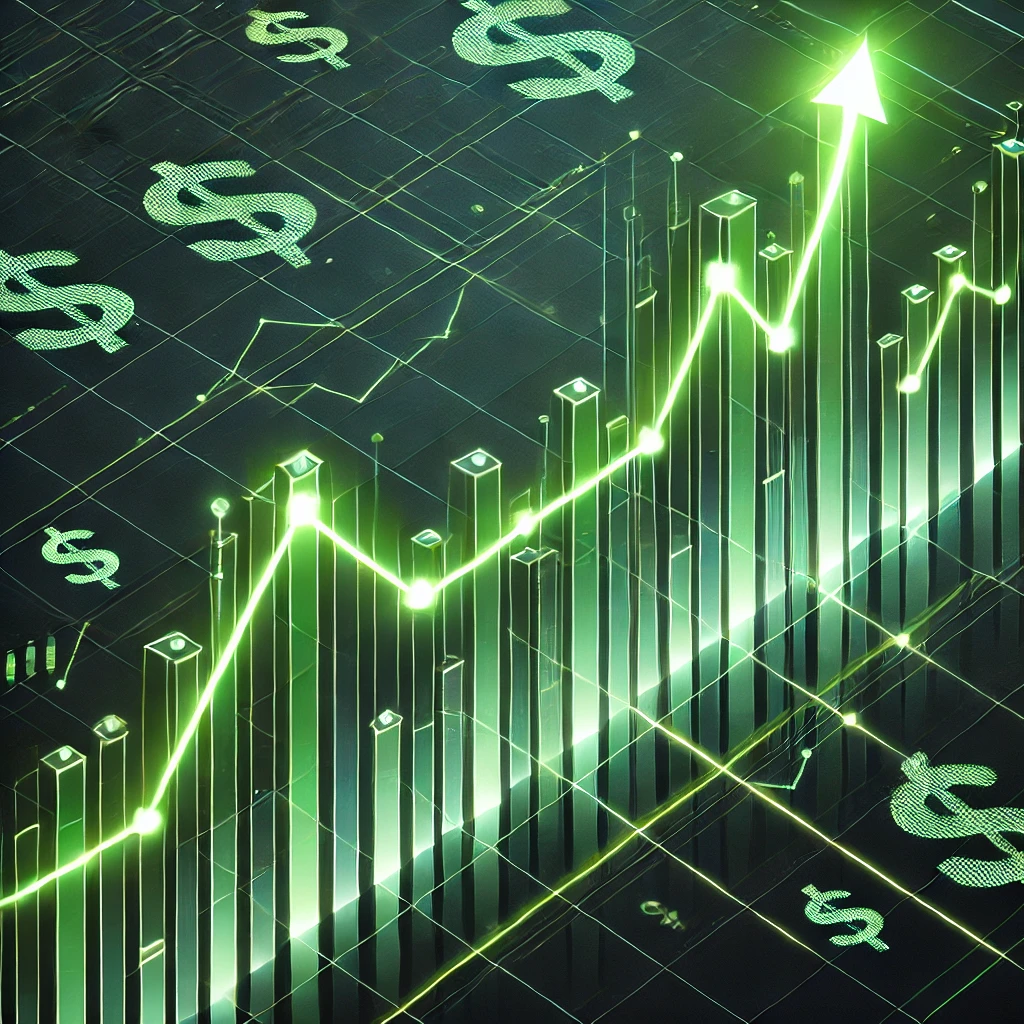Bitcoin, the world’s first and most valuable cryptocurrency, has reached a staggering milestone: a market capitalization surpassing $1 trillion. This achievement marks a significant moment in financial history, highlighting Bitcoin’s resilience, increasing adoption, and its evolving role in the global economy. But how did it get here, and what’s next for this digital asset?
The Origins of Bitcoin
Bitcoin was created in 2008 by an anonymous entity known as Satoshi Nakamoto. The whitepaper, titled Bitcoin: A Peer-to-Peer Electronic Cash System, proposed a decentralized digital currency operating on blockchain technology—a secure, transparent, and immutable ledger maintained by a network of nodes.
The first Bitcoin transaction occurred in January 2009, with the mining of the genesis block. In its early years, Bitcoin was primarily traded among tech enthusiasts and cryptographers, with little mainstream recognition. The first real-world Bitcoin transaction took place in 2010, when a programmer, Laszlo Hanyecz, famously bought two pizzas for 10,000 BTC—now worth hundreds of millions of dollars.
Why Bitcoin Has Been Difficult to Understand
Despite its growing popularity, Bitcoin remains a complex and often misunderstood asset. Several factors contribute to this difficulty:
- Technical Complexity: Unlike traditional currencies, Bitcoin operates on a decentralized blockchain, using cryptographic principles and a proof-of-work consensus mechanism, making it difficult for newcomers to grasp.
- Misinformation and Media Narratives: Over the years, Bitcoin has been labeled everything from a bubble to a tool for illicit activities, causing confusion and skepticism among the public.
- Volatility and Market Cycles: The dramatic price swings often deter those unfamiliar with market dynamics, leading many to view Bitcoin as a speculative asset rather than a technological revolution.
- Regulatory Uncertainty: Governments worldwide continue to debate how to classify and regulate Bitcoin, creating ambiguity that further complicates mainstream understanding and adoption.
Yet, despite these challenges, Bitcoin continues to gain importance as an alternative financial system, offering an escape from inflationary monetary policies and traditional banking constraints.
Bitcoin’s Road to a Trillion-Dollar Market Cap
Bitcoin’s journey to the trillion-dollar mark has been fueled by several key developments:
1. Growing Institutional Adoption
- Initially dismissed as a niche internet experiment, Bitcoin gained credibility as institutional investors, hedge funds, and publicly traded companies began allocating capital into it. Companies like Tesla, MicroStrategy, and Square have added Bitcoin to their balance sheets, viewing it as digital gold and a hedge against inflation.
2. Regulatory Clarity and ETF Approvals
- While governments and regulators initially struggled to classify Bitcoin, increasing regulatory clarity has fostered greater adoption. The approval of Bitcoin Exchange-Traded Funds (ETFs) in multiple jurisdictions has made it easier for traditional investors to gain exposure to Bitcoin without the complexities of direct ownership.
3. Macroeconomic Factors, Inflation, and Global M2 Money Supply Growth
- Bitcoin’s rise has been closely correlated with macroeconomic trends, particularly the unprecedented expansion of the global money supply. In response to economic crises such as the COVID-19 pandemic, governments and central banks have engaged in aggressive monetary stimulus, leading to a dramatic increase in M2 money supply—the measure of liquid money in circulation. Since 2020, trillions of dollars have been printed globally, significantly devaluing fiat currencies and driving investors toward scarce assets like Bitcoin. This influx of newly created money has contributed to Bitcoin’s price surge as investors seek refuge in assets that cannot be inflated away.
4. The Rise of Layer 2 Solutions and Bitcoin Innovation
- The Lightning Network, a Layer 2 scaling solution, has improved Bitcoin’s transaction speed and cost-effectiveness, making it more viable for everyday use. Additionally, developments like Ordinals and Bitcoin NFTs (non-fungible tokens) have expanded its functionality beyond simple transactions.
5. Supply Scarcity and the Halving Effect
- Bitcoin’s fixed supply of 21 million coins, coupled with the quadrennial halving events that reduce the mining reward, creates a deflationary dynamic. Each halving event historically precedes a major bull run, as the supply shock drives prices higher.
Understanding Bitcoin’s Volatility and Long-Term Growth
Bitcoin’s price action is notorious for its volatility, driven by factors such as market sentiment, regulatory news, liquidity fluctuations, and institutional adoption cycles.
- Short-Term Volatility: Bitcoin often experiences rapid price swings, sometimes losing or gaining 20-30% of its value in a matter of days. This is primarily due to a combination of speculative trading, leverage in crypto markets, and sentiment-driven reactions to news events.
- Long-Term Positive Trend: Despite short-term corrections, Bitcoin’s long-term trajectory has consistently been upward. Historically, each major price dip has been followed by a new all-time high, driven by increasing adoption, the effects of halving events, and the growing macroeconomic appeal of digital assets.
- Relation to M2 Money Supply: As more fiat currency is printed and injected into the economy, Bitcoin’s fixed supply makes it an attractive alternative. Historically, its price tends to appreciate as money printing increases, reinforcing its narrative as a hedge against inflation and currency debasement.
- Bitcoin Market Cycles: Bitcoin follows a four-year market cycle pattern, often influenced by its halving events. These cycles typically involve phases of accumulation, rapid appreciation (bull market), correction (bear market), and reaccumulation, eventually leading to new all-time highs.
Where Can Bitcoin Go from Here?
Bitcoin’s future remains a topic of intense debate, but several potential trajectories stand out:
- Mainstream Integration: As Bitcoin becomes more accepted by businesses and financial institutions, its use as both a payment method and an asset class could grow exponentially.
- Further Institutional Adoption: With more pension funds, sovereign wealth funds, and corporate treasuries exploring Bitcoin investments, institutional demand could push its price even higher.
- Regulatory Developments: While favorable regulations could accelerate adoption, adverse policies or crackdowns in major economies could pose risks.
- Bitcoin as a Global Reserve Asset: Some analysts speculate that Bitcoin could evolve into a major global reserve asset, challenging traditional fiat currencies like the US dollar.
- Technological Advancements: Improvements in Bitcoin’s scalability, security, and usability through innovations like Taproot and the Lightning Network could unlock new use cases and drive further adoption.
- Bitcoin’s Role in Decentralized Finance (DeFi): With the growth of DeFi applications on other blockchains, Bitcoin is also seeing increasing utility in the DeFi space, such as being used as collateral or wrapped assets in various protocols.
Conclusion
Bitcoin’s rise to a trillion-dollar market cap is a testament to its resilience, innovation, and increasing acceptance. While its journey has been marked by volatility, skepticism, and regulatory hurdles, Bitcoin continues to solidify its place in the financial landscape. Whether it evolves into a global monetary standard or remains a digital store of value, its influence on the world economy is undeniable.
Why Bitcoin’s Future Looks Promising
- Limited supply ensures scarcity
- Increasing institutional adoption
- Expansion of Bitcoin ETFs
- Technological improvements enhancing usability
- Macroeconomic factors driving demand for sound money



 The Golden Bit of It: Gold, Bitcoin, and Your Portfolio
The Golden Bit of It: Gold, Bitcoin, and Your Portfolio